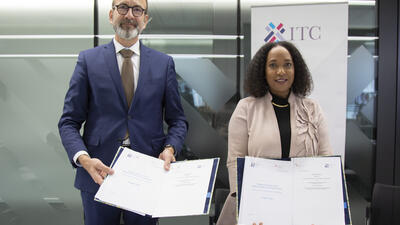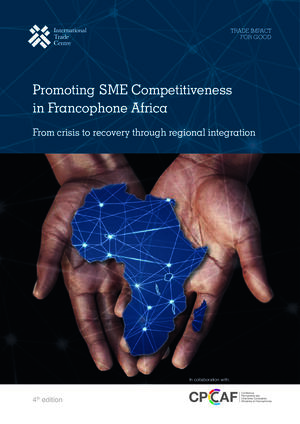SME Competitiveness Outlook 2016: Meeting the Standard for Trade
Standards and regulations have a major impact on SME competitiveness.
By meeting the standard for trade, the theme of this year’s SME Competitiveness Outlook report, SMEs increase their chances to connect to international value chains and consumers in a socially and environmentally sustainable manner. The report contains: governance insights for voluntary sustainability standards; new evidence on how standards and regulations affect trade and business performance; guidance for SMEs on how to select and implement standards and regulations; and a policy action plan to strengthen SMEs’ ability to meet standards and regulations.
Key findings and conclusions
Part I: SME Competitiveness: Standards and Regulations Matter
Chapter 1: Standards and Regulations – a part of our daily lives
Standards and regulations are an integral, if easily overlooked, part of our daily life. They determine whether a plug fits into a socket or whether one mobile phone can connect to another. They determine whether water is deemed safe for human consumption, whether a medicine can be sold to the public or whether a financial institution is allowed to accept deposits and provide credit.
Chapter 2: Running a business: Standards every step of the way
This report shows just how widespread standards are at every stage of a firm’s internal value chain, and in its interaction with both suppliers and customers. The point is that, from the business manager’s perspective, the presence of standards and regulations is felt across the business.
Chapter 3: Zeroing in on sectors and products
The report discusses the types of standards and regulations present in 13 sectors, and concludes that although commonalities exist, standards and regulations are highly sector and product specific.
Chapter 4: The impact of standards and regulations on competitiveness
Smaller and less productive firms find it harder to cover fixed costs to comply with standards and regulations. This report finds that a 10% increase in the frequency of regulatory or procedural trade obstacles encountered, decreases the export value of large firms by 1.6%, and by 3.2% for small firms.
When standards are set by for-profit organizations, producers and other stakeholders are more likely to share implementation and certification costs with suppliers in their chain. Accessing IVCs, however, is easier said than done. SMEs must reach a certain level of competitiveness before they can access IVCs and reap the benefits. If you can’t access the chain, you get left behind.
Chapter 5: The manager’s perspective
This report highlights where managers can find relevant information, how to assess the costs and benefits of compliance, how to implement standards, how to demonstrate compliance and how to use standards to boost sales.
Chapter 6: Making Standards and regulations work for trade
A key finding of this report is that resource constrained governments often have to make strategic decisions with respect to which product lines they will support with new or better internationally recognized technical infrastructure. To make these decisions, the report suggests that governments assess the following factors:
- The strengths and weakness of firms
- Where the country’s export potential lies
- The regulations and standards business will face
- The costs of new technical infrastructure
- Ability to get international recognition
This report presents a 5 point action plan for policy makers and trade and investment institutions (TISIs) who wish to think strategically about SMEs’ ability to compete in markets where standards and regulations matter.
Part II: SME Competitiveness: Regional Analysis
By combining data on a region’s export potential and the technical regulations it faces in destination markets, the report can inform policy makers on which sectors to prioritize when thinking about strategic investments in technical infrastructure.
Middle East and North Africa:
- There is unexploited export potential in the fresh and processed food sectors, 43% of which is directed to the MENA region itself
- Technical regulation in the fresh and processed food sectors are four times higher in MENA that in other regions
- SMEs in the region hold relatively few internationally recognized quality certificates
Asia-Pacific:
- There is unexploited export potential in the IT and consumer electronics sector
- 21% of the top 200 products with diversification potential are found in the chemicals sector, indicating that it is a promising avenue for product diversification
- International management and quality standards have high adoption rates in Asia’s large economies, but low adoption rates in the region’s small poor economies
- A shift from electronics / IT to chemicals implies a shift from compatibility standards to consumer protection standards
Latin America and the Caribbean:
- About 50% of the region’s unexploited export potential in the transportation and fresh sectors, much of which is directed to developed economies
- The chemicals and processed food sectors are promising avenues for product diversification
- A high proportion of medium and large-sized firms hold international quality certificates; this is not the case for small firms
- LAC would benefit from strengthening the immediate business environment to help reduce the time management spends dealing with regulations
Sub-Saharan Africa:
- About 30% of the region’s unexploited export potential in the fresh food, and a further 20% is in metal and basic manufacturing sectors
- 40% of the top 200 products with diversification potential are found in the processed food, and metal and basic manufacturing sector, indicating that these are promising avenues for product diversification
- Adoption of international quality certificates is widespread among medium and large-sized firms
- Relatively weak adoption of international management standards may undermine the region’s potential to diversify into new products, as these standards imply transferable expertise
Eastern Europe and Central Asia:
- Metal and basic manufactures represent 28.4% of the regions unexploited export potential. Together with chemicals, these two sectors represent just over 50% of the region’s top 200 products with diversification potential
- The EECA region is the wealthiest region in our sample, but it does not outperform other regions on ‘time managers spend on regulations’ and the extent to which firms adopt international management standards.
- These areas may warrant improvement, in particular if the region aims to take advantage of diversification opportunities in sectors such as chemicals






























